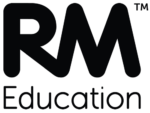There are different internet circuits that schools/premises can have installed. I’ll provide a high level overview of the internet options that we use/ are common place within the telecoms market:
Fibre leased lines:
This is how all secondary schools, as well as some primary schools, connect into the network. It is a fibre line that connects the school with their local BT exchange, giving it a direct route and a guaranteed bandwidth. This technology provides the same download and upload speed making it a symmetrical service. This uncontended (unshared) fibre connection is a premium circuit. The DfE Digital and Technology Standards state that secondary schools should all have a fibre leased line with speeds of at least 1Gbps.
Fibre leased lines are now typically delivered on 1Gbps and 10Gbps bearers. The bearer is the maximum speed that the telecoms infrastructure can support. An example of a fibre leased line connections is 500Mbps(1Gbps). This means the actual bandwidth is 500Mbps but the speed can be increased up to 1Gbps, if the end site needed a faster service.
Fibre to the premise (FTTP):
No doubt many of you will have heard about the fibre roll out. For many years now, providers such as Openreach have been busy building their fibre networks to allow premises to have access to full fibre and high speeds. It is a more affordable and attainable fibre connection than fibre leased lines. FTTP enables gigabit-capable speeds (up to 1000 Mbps or more) compared to the limitations of copper-based connections. As of July 2025, around 70% of UK premises, now have access to full fibre. The government aims to achieve full fibre coverage for nearly all UK properties (95-96%) by 2027.
The main provider of FTTP connections is Openreach and lots of HFL Broadband schools have a 1000Mbps/115Mbps circuit. This means their download speeds should be close to 1000Mbps and upload speeds at 115Mbps. It isn’t just Openreach though and there are lots of other broadband suppliers providing FTTP. These companies are often referred to as Alt Nets. Through RM (our broadband partner) we can deliver our service over Alt Nets such as City Fibre Fibre and Gigaclear.
With FTTP providing full fibre and high speeds, at an affordable price, it is an ideal connectivity choice for primary schools. The DfE Digital and Technology Standards state that primary schools should all have a fibre service (which can be a fibre leased or FTTP) with download speeds of at least 100Mbps and upload speeds of at least 30Mbps.
Copper solutions:
For primary schools that do not have FTTP in their area (yet), they will have the decision to make; pay more and have a fibre leased line. They can then hit to the DfE’s standards. Of course school budgets are tight so some schools may actually decide to remain on copper solutions, while they wait for the more affordable FTTP to become available. We would encourage schools to adhere to the DfE standards and have a fibre connection where possible.
Copper connections are typically: Ethernet over fibre to the cabinet (EoFTTC), Fibre to the cabinet (FTTC) and SOGEA. These connection types all offer similar speeds and the maximum bandwidths they can achieve are 80Mbps down/20Mbps up.
4G:
Then there are are other technologies such as mobile data/4G. We can deliver our service over 4G but the speeds and reliability will typically be lower than the fixed circuits that I have mentioned above. If a school has good mobile data speeds inside their building, they may want to consider having a backup 4G resilient connection that will automatically kick in, if their main service fails.

